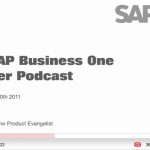A Quick note from Richard Duffy:
It is a real pleasure for me to have Tim Berry write this guest post for the site – Tim is one of the most respected subject matter experts on Business Planning and you can learn more about Tim and his background at www.timberry.com.
I have been a fan since I first discovered his software Business Plan Pro a number of years ago and I highly recommend it to anyone looking for a tool to help them in the planning process as well as his latest book – The Plan As You Go Business Plan – a highly recommended read!
So enough from me – over to Tim!
_________________________________
When’s the right time for business planning? My favorite answer is from an old African proverb (or so I was told; I got it from Twitter):
The best time to plant a tree is 20 years ago. The second best time is now.
Given the increasing pace of change, and the needs of a business to anticipate, track, and manage that change, the right kind of business planning is something that happens regularly, and continues forever.
Real planning isn’t a business plan document; it’s management. It’s setting strategy, tactics, activities, responsibilities, and budgets, plus the numerical goals and measurements required to track progress towards goals.
Much like the proverb about the tree would imply, it’s hard to get started, but more because people misunderstand the tool and the process than because it’s really hard. To help motivate yourself as you start, jump in and do parts of the plan without worrying about finishing a complete document. Start where you like: some prefer the context, such as vision statement or objectives. Some prefer the strategy, like target market and product-market mix. And some prefer the nuts and bolts, like the sales forecast. Try to think of your plan as a connected set of components or modules. Think of it as something that will change often, and therefore should remain flexible.
Don’t worry about having a finished plan. In the real world, if your business plan is finished, then it’s already obsolete. If your plan is finished, then your business is finished.
As soon as you get started with a plan, set a review schedule in advance. Don’t take too much time, but do set up a monthly review. In my company we always did that on the third Thursday of the month, around lunch time, so we ordered lunch in to save time.
Always list your assumptions. You’ll start your monthly meetings by listing your main assumptions and discussing how well they have held up. One key to the difficult question of when to revise a plan is to identify when assumptions have changed.
In plan review meetings, stay collaborative. The comparison between planned results and actual results isn’t a tool to catch people who underperform their measurements; instead, it’s to catch performance problems early and to work together to solve problems. It’s also to catch things that are working, and adjust priority to make sure resources match strategy and opportunity.
In the early stages, planning process is pushing things forward because they should be considered. As your organization gets used to planning processw, it becomes hard to imagine how you ever managed without it.
Tim Berry – October 27th 2011








Get Social